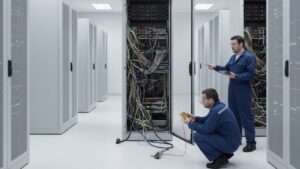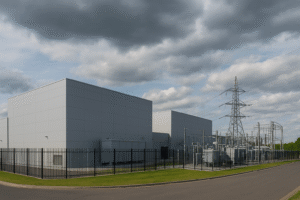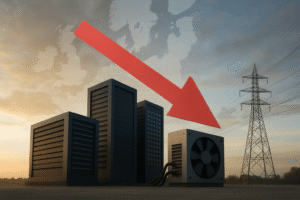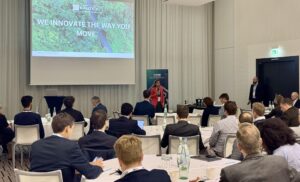The transformation of HVACR in food processing plants shows an important shift in sustainable manufacturing practices. Furthermore, food processing plants can use up to 60% of their total energy on HVAC and refrigeration. So, there is increasing pressure for this industry to become “greener. Food processing plants can thus cut their HVACR-related energy usage using modern, green technologies. This evolution is driven by stringent environmental regulations, rising energy costs, and increasing consumer demand for sustainable food products. This article delves into the new frontiers of green HVACR technologies geared toward food production. It will discuss state-of-the-art cooling and heating technologies, eco-friendly implementation methods, and infrastructure developments that will change the face of the industry.
Environmentally Friendly HVACR Solutions For Food Processing: Temperature Control Innovations
Precision temperature control, a necessity in the food industry, has led to many breakthroughs in green HVACR technology. It places equal emphasis on energy efficiency as well as product safety. So, let us see some of these breakthroughs ahead:
Advanced Cold Chain Management Systems
Modern food processing plants are adopting advanced cold chain management systems. These integrate IoT sensors and smart controls. Furthermore, these systems keep temperatures ideal throughout the stages of production and use much less energy than conventional systems. Moreover, real-time monitoring ensures the quality of the product is improved. Meanwhile, adaptive controls ensure the cooling power is adjusted to the actual demand. Additionally, new implementations in dairy processing facilities have shown energy savings of as much as 40% and an improvement in temperature consistency.
Multi-Temperature Zone Optimization
Advanced Line zoning systems enable buildings to sustain different temperature zones with a newfound level of efficiency. Furthermore, these systems use intelligent dampers and variable-speed compressors. It helps to balance cooling loads between freezing, chilling, and ambient zones, all while cutting energy consumption. Moreover, food processing companies claim that they have increased the quality of their product and have decreased spoilage rates just by having more control over temperatures in various areas of processing as a part of green HVACR.
Food Safety and Temperature Monitoring
Next-gen temperature-checking systems use blockchain and AI to provide perpetual food safety compliance. Furthermore, these systems give real-time alerts, automatic documentation, and predictive maintenance. Moreover, automated temperature monitoring systems can decrease temperature-related food safety violations and can cut the cost of compliance monitoring. Additionally, the use of smart sensors allows for an immediate reaction to temperature changes. As a result, it maintains the integrity of the product.
Energy-Efficient Cooling Solutions for Production Lines
Modern production line cooling systems use variable frequency drives and smart load management to minimize energy use. Furthermore, these systems can adapt to production schedules and product requirements, using much less energy than what is required by conventional fixed-speed systems. Moreover, with new developments in DDC (direct digital control), the average facility can save majorly on cooling costs and still adhere to tighter temperature tolerances.
Green HVACR In Food Production Facilities: Sustainable Cooling and Heating Integration
The integration of sustainable cooling and heating designs is the new horizon of food facility HVACR systems, achieving peak performance with a minimal environmental footprint. Let us dive deeper into it in this section:
Heat Recovery from Processing Operations
New heat recovery systems are capable of utilizing 85% of the waste heat from processing operations for reusing it for heat in the facility or hot water production. Furthermore, food processors that have used these systems report major energy savings in medium-sized plants. Additionally, the latest plate heat exchangers and thermal storage systems allow for facilities to efficiently store and reuse recovered heat throughout their processes.
Renewable Energy Integration in HVACR
More and more food production facilities are using solar thermal and geothermal systems in conjunction with traditional HVACR in food production facilities. These hybrid systems can reduce fossil fuel usage and maintain stable temperature control. Moreover, new installations prove to have a payback period of 5 years with the assistance of existing green energy incentives. The use of renewables also allows facilities to fulfill corporate sustainability objectives.
Natural Refrigerant Applications in Food Processing
CO2 and ammonia refrigeration systems are becoming more popular in food processing plants as they are environmentally friendly. Furthermore, these natural refrigerants are much more energy efficient and do not emit any harmful HFCs. According to new case studies, transcritical CO2 systems can cut operational costs by close to twenty percent over conventional systems. It can also offer improved temperature control for delicate food items.
Smart Temperature Control for Different Food Products
AI-driven temperature control systems now customize cool and heating patterns based on the needs of a particular product. Furthermore, these intelligent systems are trained with historical data to use the least amount of energy possible. This is while still maintaining product quality. Moreover, facilities using these systems report energy savings of over 20% along with a 15% reduction in product quality deviations. This technology also allows for temperature control accuracy for individual products on the same production line.
Energy-Efficient HVACR Systems For Food Production: Future-Ready Infrastructure
The development of green HVACR infrastructure is necessary for food production facilities to maintain long-term sustainability and operational efficiency. So, let us see some elements that help ensure this:
Advanced Building Envelope Technologies
Modern food processing facilities now include state-of-the-art building envelope technologies that interact with green HVACR systems. Furthermore, thermally responsive materials can actively control heat transfers, thus further reducing HVACR loads. Moreover, electrochromic glazing with smart facades self-adjusts to changing sunlight conditions. Meanwhile, aero-gel-based insulation systems give superior thermal resistance with minimal thickness. Such technologies have recently been applied in large food processing facilities, which showed significant energy reductions in the aggregate HVACR consumption and increased stability of temperature over the plant.
Predictive Load Management Systems
The new predictive load management systems are changing how food production facilities deal with HVACR requirements. These are the types of systems that employ machine learning algorithms that study historical data, weather patterns, and production schedules. This optimizes green HVACR operational hours before the demand happens. Moreover, buildings that have adopted these systems report peak load reductions of 30-40% and overall energy savings of 25%. So, this technology allows for accurate capacity planning. This is so that the facilities can stay in prime condition without wasting energy when production volumes change.
Hybrid Thermal Storage Solutions
Innovative thermal storage technologies are revolutionizing energy control in HVACR systems used in food manufacturing. Furthermore, facilities can save up to 50% on their operating costs by using new phase change materials (PCMs) and thermal energy storage systems to move their cooling loads to off-peak hours. Moreover, the new hybrid storage solutions utilize multiple technologies. It includes ice storage for deep cooling as well as PCMs for moderate temperature control. So, this new technology allows for a great deal of flexibility and efficiency in thermal management throughout the various production zones. Additionally, these systems provide vital backup power in the event of blackouts and facilitate the use of renewable energy sources much more effectively.
Zero-Carbon HVACR Architecture
The development of zero-carbon or green HVACR design is the ultimate goal of sustainable food processing facilities. These systems integrate passive cooling techniques, renewable energy, and smart controls. This is to reduce or eliminate carbon emissions. Furthermore, sophisticated design strategies utilize natural ventilation, solar chimneys, and geothermal exchange to reduce the need for mechanical cooling by as much as 60%. Additionally, new projects show that zero-carbon HVACR in Food Production Facilities can meet stringent food safety requirements and achieve carbon neutrality with prudent system integration and inventive energy management approaches.
To Sum Up
Green HVACR in food production facilities is a field that is quickly expanding with the help of both technology and environmental necessity. Moving to sustainable HVACR systems greatly benefits energy efficiency, operational performance, and the reduction of environmental impact.
If you want to learn more about such innovations, join us at the 3rd Net Zero Food & Beverage Forum, taking place on January 15-16, 2025, in Berlin, Germany. This essential industry event will showcase the latest developments in sustainable technologies for the food & Beverage industry, provide valuable insights into implementing solutions/dodging challenges in your facility, and give unmatched networking opportunities. So, register now!




